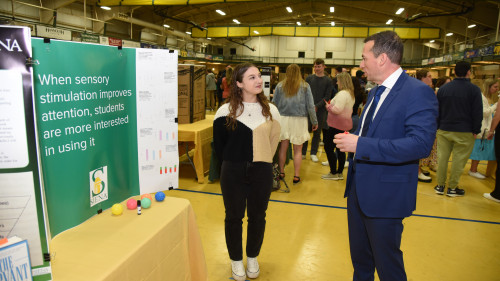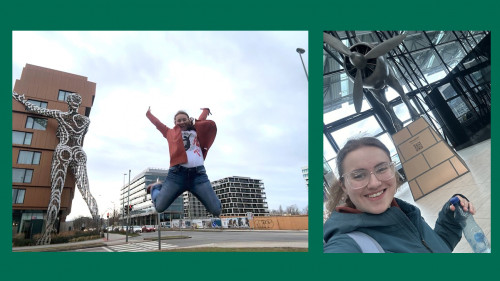

Department of Physics and Astronomy Assistant Professor John Moustakas, Ph.D., and his students are working alongside leading scientists from around the world on a project that seeks to unveil the secrets of how and why the universe is expanding.
The project, known as the Dark Energy Spectroscopic Instrument (DESI), involves placing a massive spectrograph on a 13-foot diameter telescope at the Kitt Peak National Observatory near Tucson, Ariz., to create a three-dimensional map of the universe, reaching deeper in space and time than ever before. The map will reveal how dark energy and gravity have competed over time to shape the structure of the universe.
Led by the Lawrence Berkeley National Lab in California, more than 200 leadinguniversities, government laboratories and colleges are involved in this effort. These institutions, in addition to Siena, include Berkeley, Harvard, Stanford and Yale. The U.S.Department of Energy is providing funding for the project, and has approved the project’s scientific scope, schedule, and funding profile.
“This is leading-edge research that will significantly advance our knowledge of the universe,” Dr. Moustakas said.
As an expert in spectroscopic data analysis with nearly a decade of experience working on massive surveys of the extragalactic sky, Dr. Moustakas’ work will help the project interpret the data collected from some of the deepest recesses of the universe. Dr. Moustakas also co-chairs the committee which is developing the strategies for choosing which distant objects DESI will observe, and is a member of the DESI Institutional Board, which oversees the collaboration's scientific activities.
Over the next two years, he and his students will travel to observatories in Arizona and Chile to assist in the ongoing imaging surveys that will be used to map out the most relevant areas of the universe for scrutiny when the spectrograph is put in place and begins making observations in early 2019.
"Being involved in DESI is a tremendous opportunity for our students. Not only will they be able to collaborate with world-class scientists from national laboratories and major universities around the world, but they will also be a part of trying to understand one of the biggest mysteries in science — what is dark energy?" Dr. Moustakas said. “I have no doubt this project will lead to astounding discoveries and deepen our understanding of the universe.”
Elijah Beaudin, a senior physics major at Siena who has worked on aspects of the project, was thrilled at the opportunity to be involved in such important work. “This research has been incredibly beneficial in deciding a career path, and has given me vital experience with which to continue my scientific journey,” he said. “Working with Dr. Moustakas has been a truly educational, engaging, and thought provoking experience which has greatly increased my knowledge of astronomy, astrophysics, research methods, and the scientific community as a whole.”
The DESI project, when it is completed nearly a decade from now, will have surveyed more than 30 million galaxies and quasars, and will capture light that has travelled for more than 10 billion years, when the universe was less than a third its present age.
Harvard’s Daniel Eisenstein, a spokesperson for the DESI project, noted the work will “use the fossil imprint of sound waves from the first 400,000 years of the universe” to reveal the nature of dark energy.
"This is another example of Siena's drive to expose our students to world-class research," said Dr. John Cummings, Interim Dean of Siena’s School of Science. "We give them the skills they need at facilities such as the new SAINT (Stewart's Advanced Instrumentation and Technology) center, and then let them exercise those research skills in major scientific endeavors such as DESI. These research opportunities provide experiential learning of a type that is rarely found combined with the benefits of a small liberal arts college."
Dr. Moustakas noted, "This is an amazing time to be studying astronomy at Siena!"

